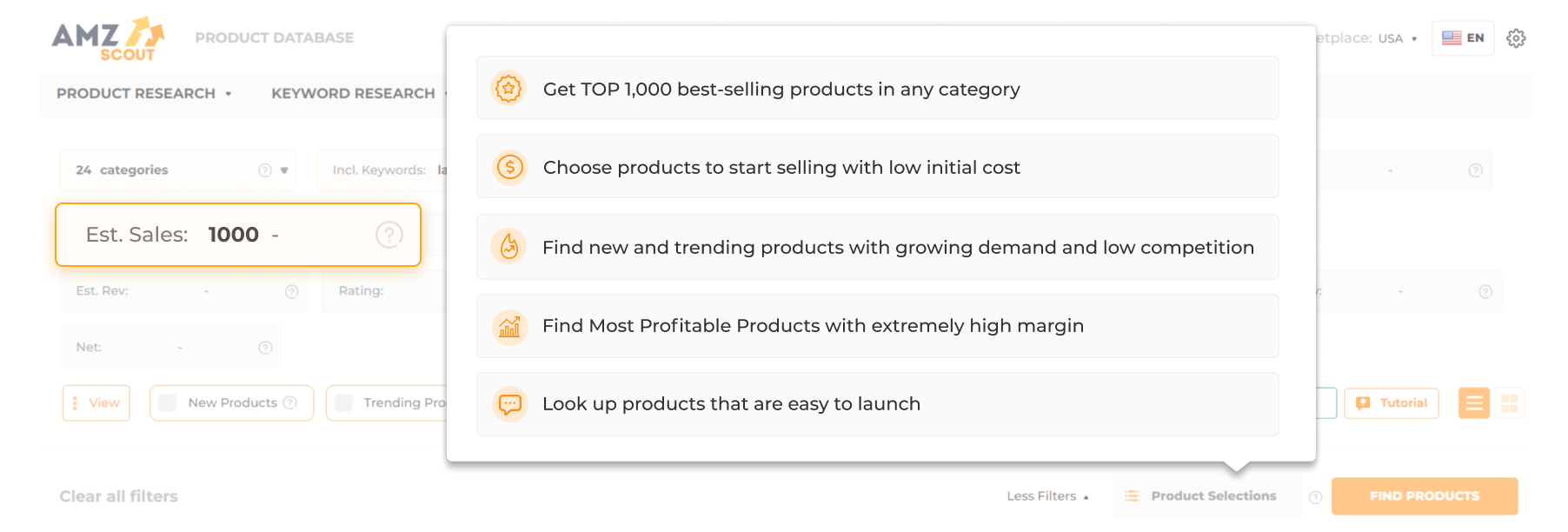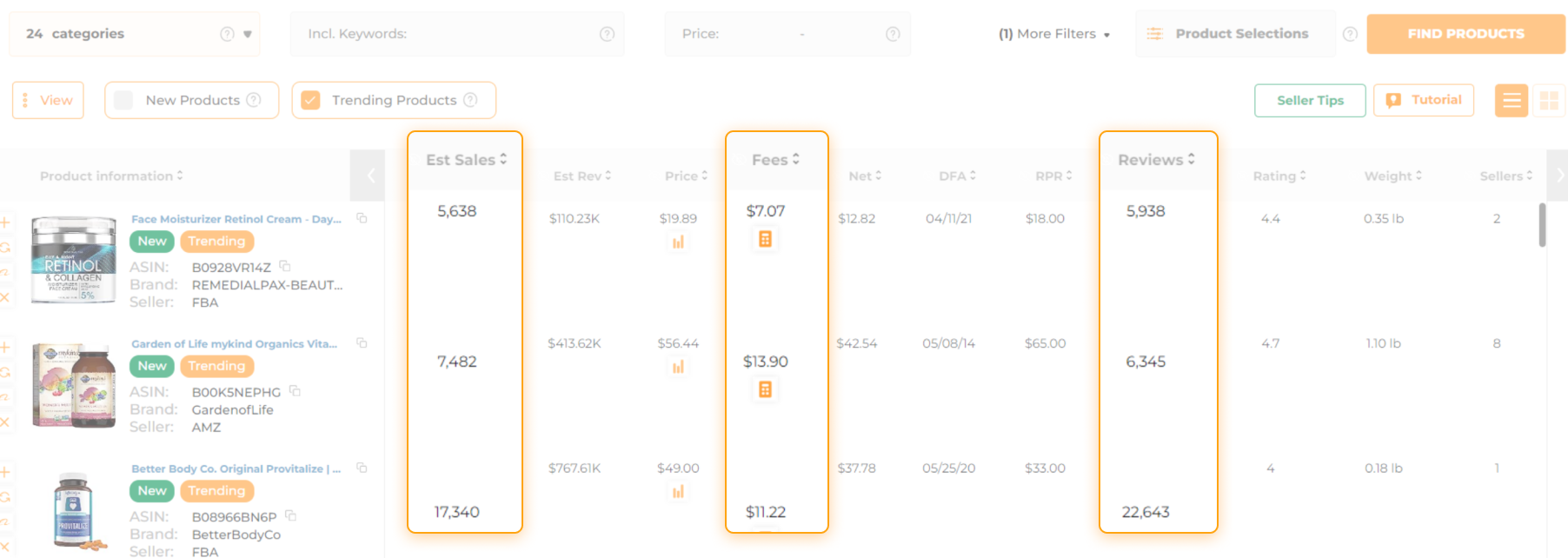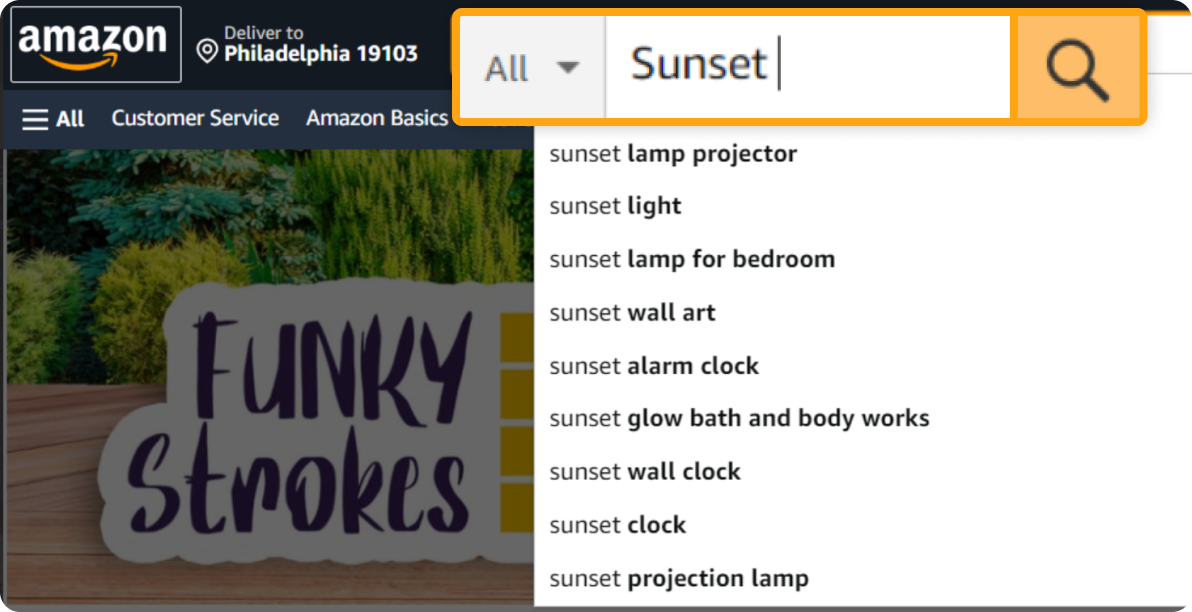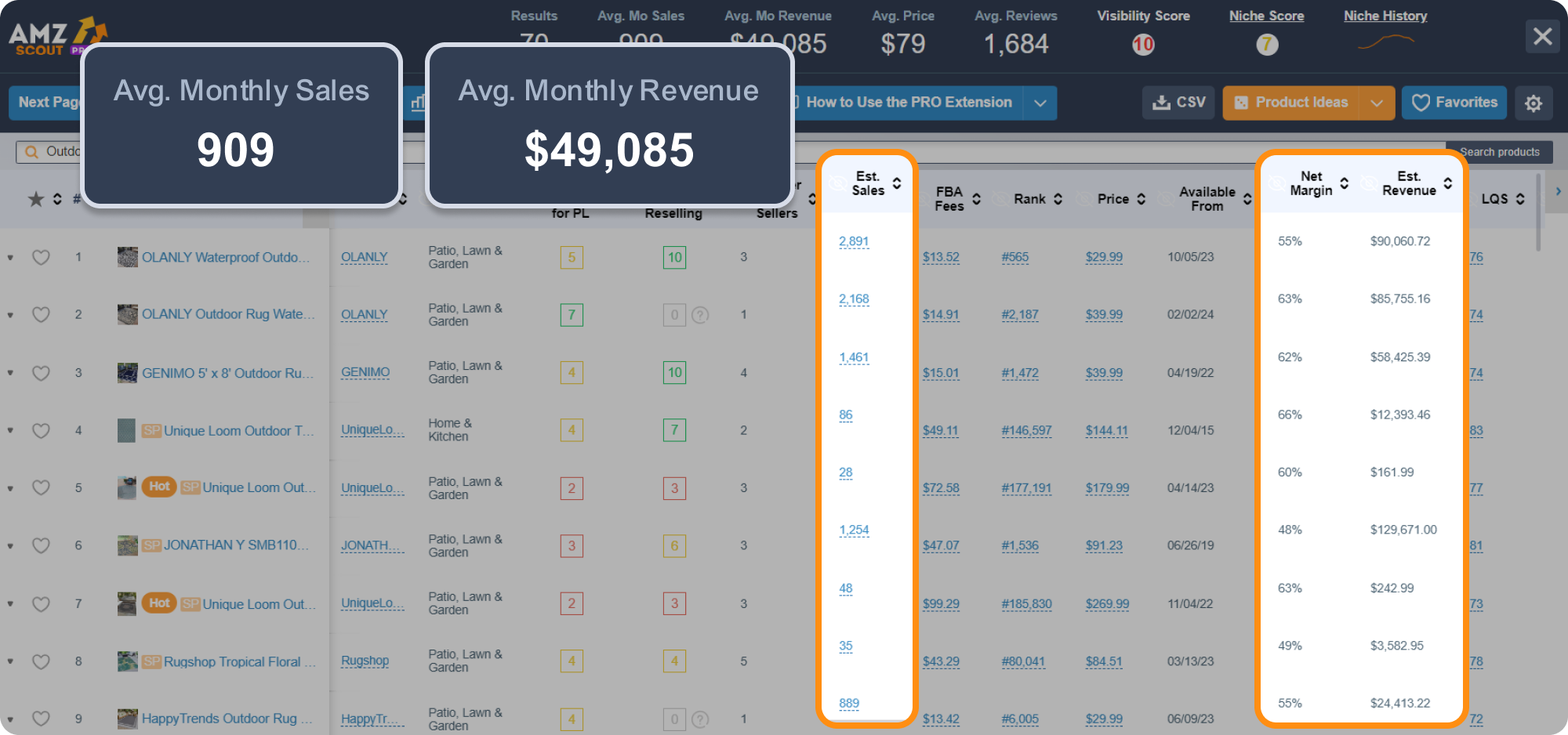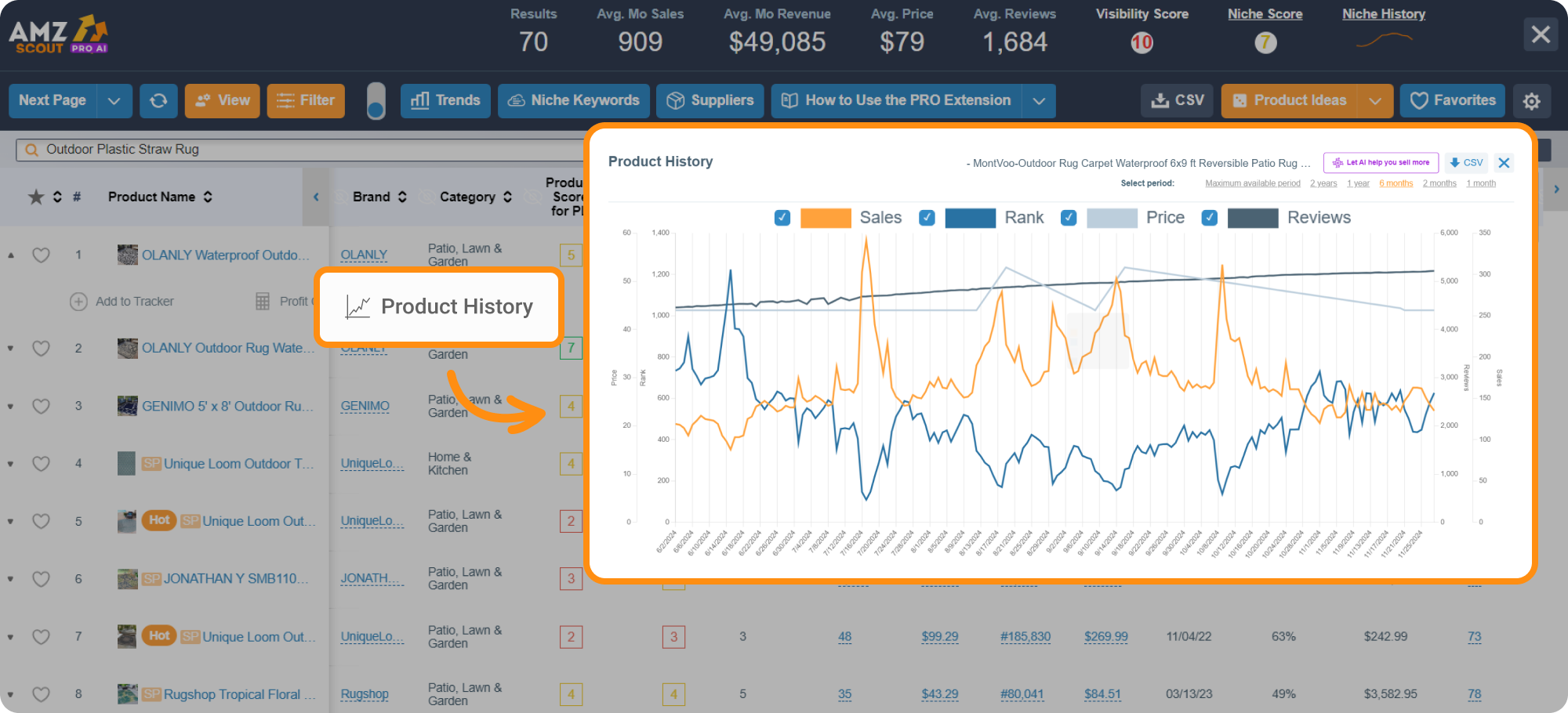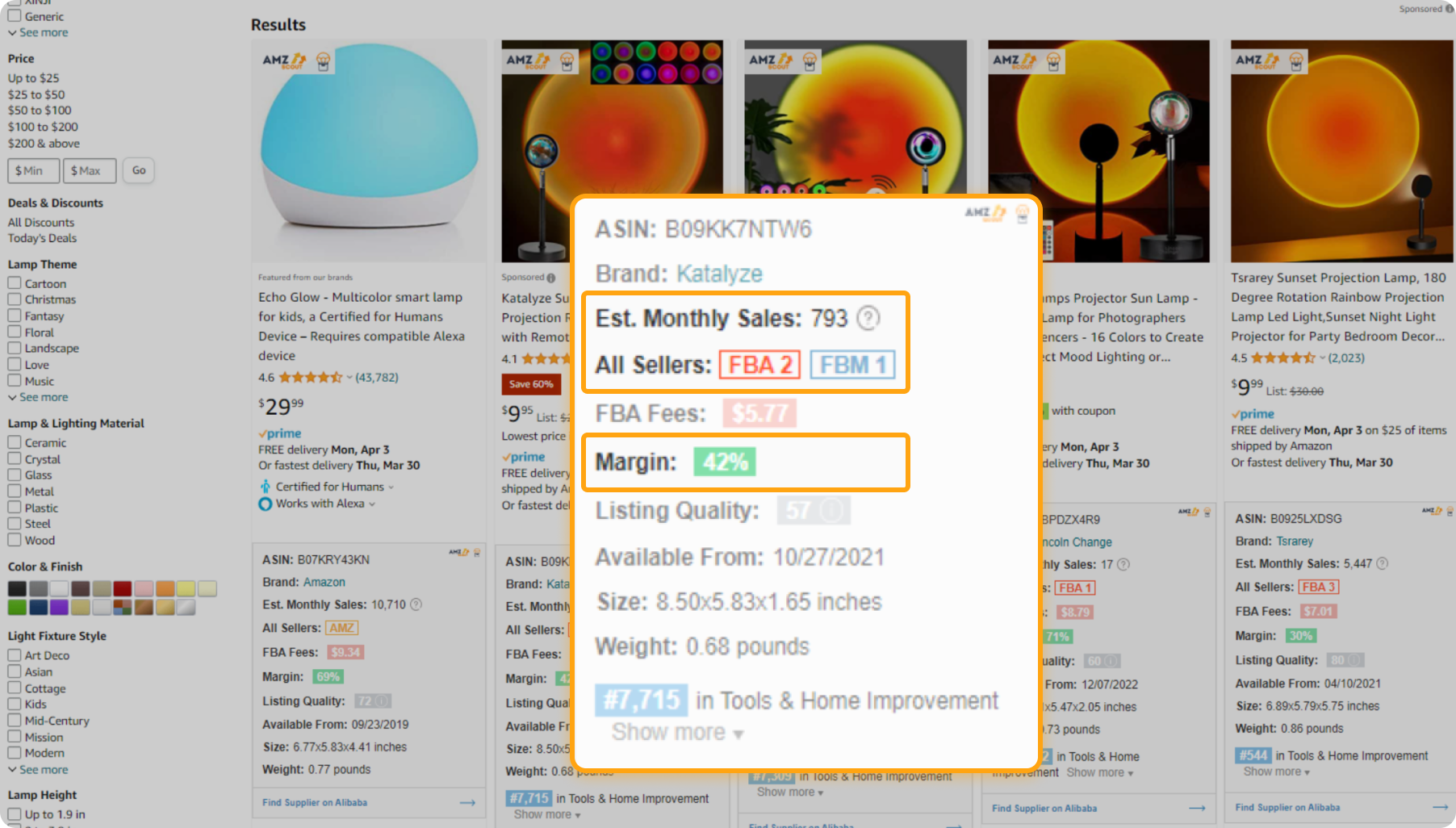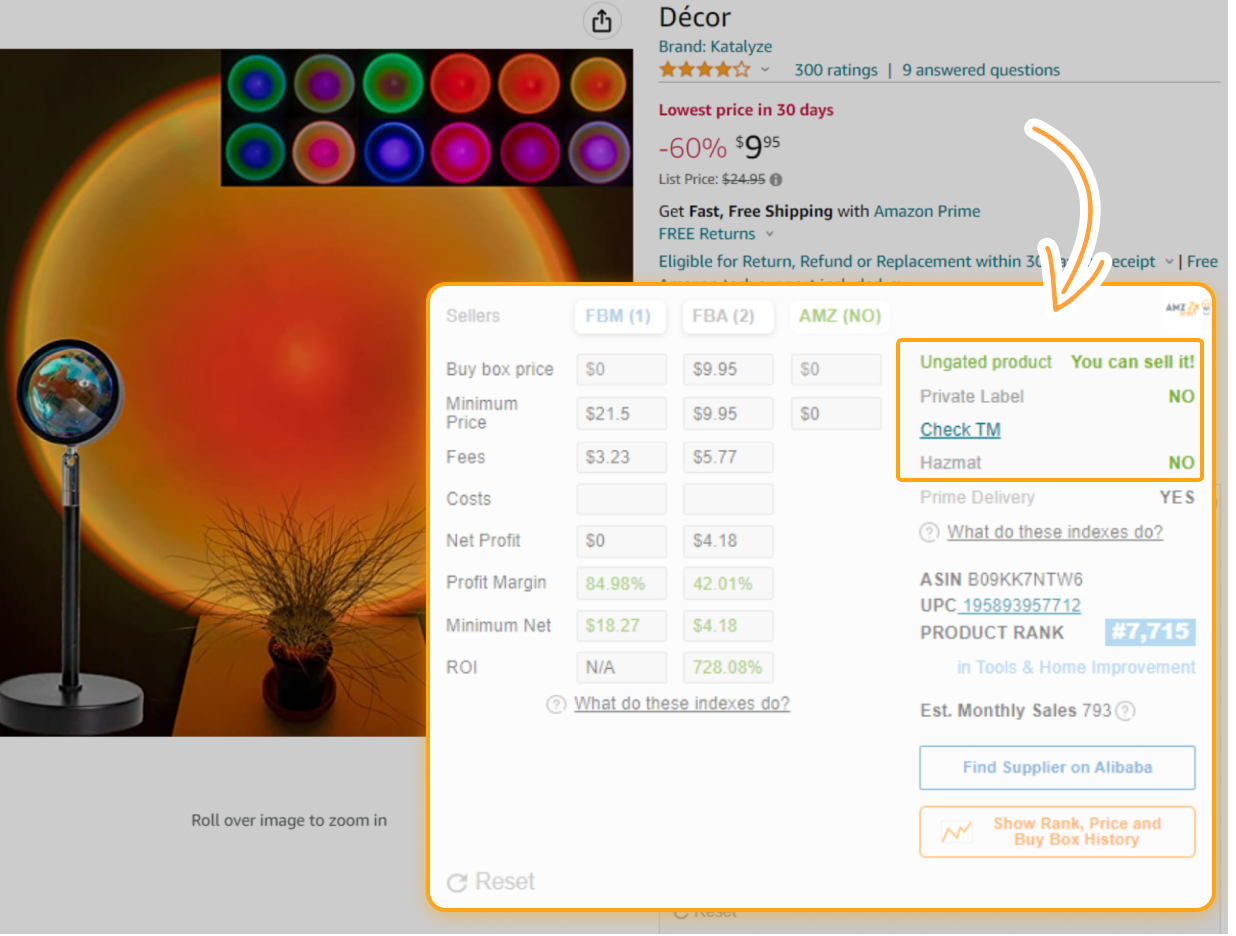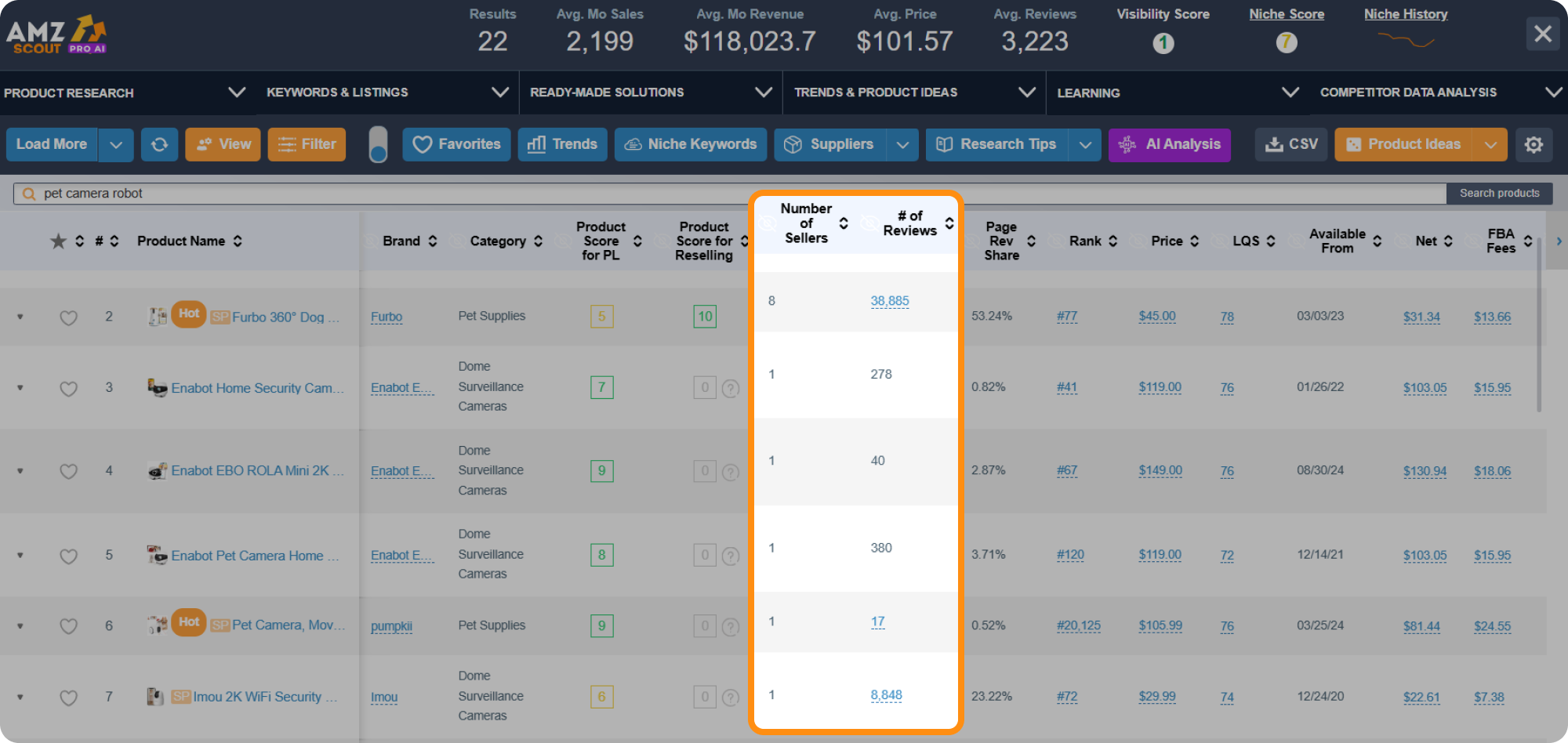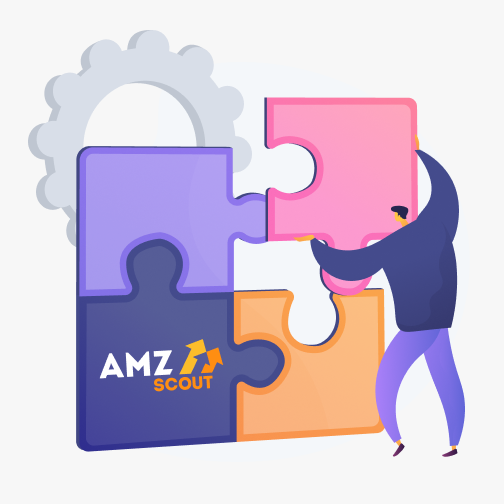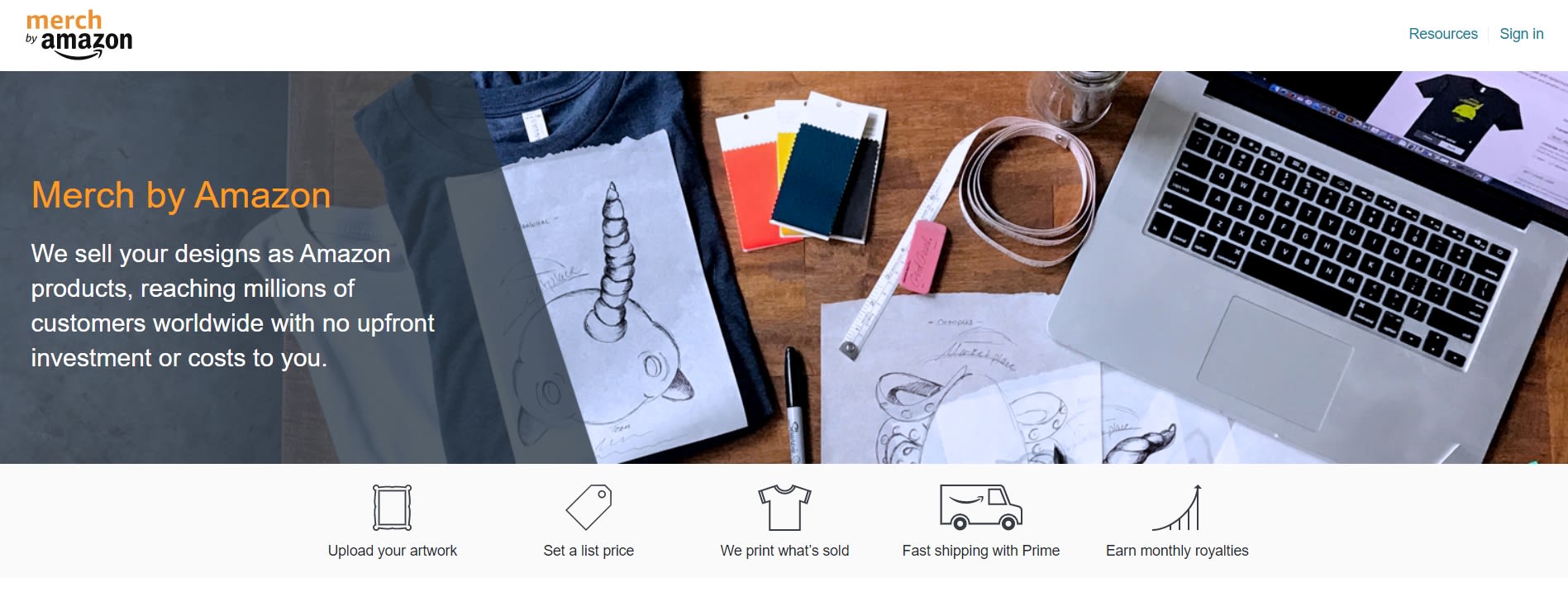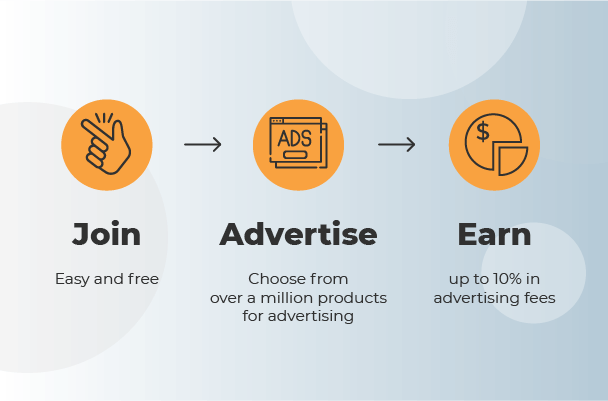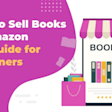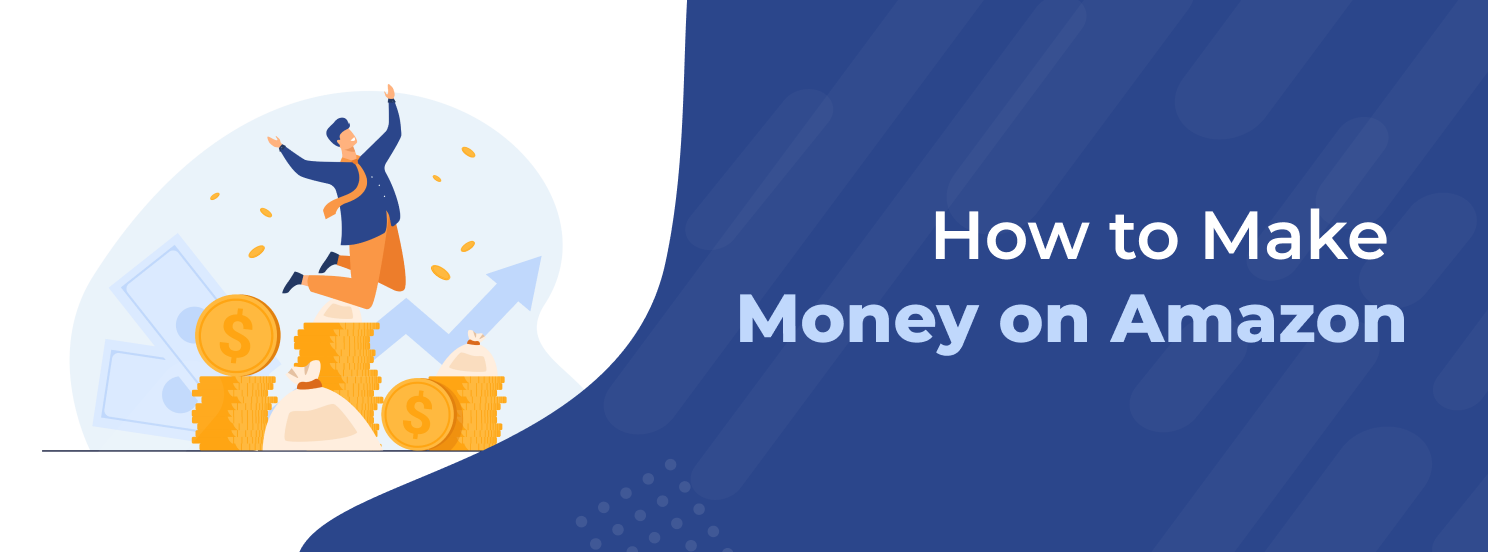
How to Make Money on Amazon: 18 Proven Strategies 2025
Amazon, the world's largest eCommerce company, makes an estimated $830 thousand per minute. But contrary to popular belief, you don't have to be an eCommerce pro to be successful on Amazon. If you want to know how to make money on Amazon, this article will show you several methods.
There are four main ways to make money on Amazon: selling items, taking support opportunities, being a partner or influencer, or working for Amazon as an employee. Check out our complete list of 18 money-making opportunities below.
Table of contents
How to Make Money Selling on Amazon
Amazon sellers can make anywhere from a few hundred dollars to several thousand per month. The difference between sellers who make a lot and a little is product research and strategy.
Sellers in the right market can easily turn this into a full-time income. When making thousands of dollars per month, you can rely on Amazon. Eventually, you can use this to fund future businesses.
Below, you’ll find nine ways to make money selling on Amazon.
#1: Launching Your Own Brand on Amazon
Can you make money selling on Amazon? The short answer is "yes," while the long answer is that there are many ways. One of the most powerful ways that you can get rich is by launching a new brand.
Launching your own brand is easier than you think. Amazon supports this through the Amazon Brand Registry. Even if you have no prior experience, you can get started today. Sellers who successfully launch their brand often earn between $5,000 and $50,000 per month, depending on their niche and marketing.
To launch an Amazon brand, you'll need to keep these tips in mind:
You need a registered trademark for your brand name.
You need to be in a country that Amazon supports (such as the United States, United Kingdom, Australia, etc.)
Consider the list of product categories your brand creates.
Include product photographs showing your logo on the product and brand packaging.
Using the AMZScout Product Database to Find Your Products
If you want to start on the path to creating your brand, you'll need to research effective products. To simplify this step, check out the AMZScout Product Database. These steps will help you find potential things to sell:
1. Go to the AMZScout Product Database.
2. Sign up for your free trial. You'll need to fill out a sign-up form if you don't already have an account. You don't need to input any payment information.
3. Set product criteria. Use the search filters found on the Product Database to narrow your criteria. For example, you can set the number of sales starting at 300 to exclude products with low demand. You can also use the Product Selections tool to find products based on proven criteria.
4. Retrieve search results. Click Find Products to search based on your product criteria.
5. Choose the products which most closely align with your criteria. Pay attention to the ratio of sales to the number of reviews; the higher the percentage, the less competition you are likely to face.
Using the AMZScout PRO AI Extension to Find Profitable Branded Products
The Product Database provides a good starting point to find what you need, but the PRO AI Extension offers more information. The AMZScout PRO AI Extension will analyze your niche and competition to make sure you can turn a profit.
Below, you'll find some steps on how to use it:
1. Install the AMZScout PRO AI Extension.
2. Open AMZScout PRO AI Extension.
Amazon will open automatically after the installation.
You will find that the extension will appear along the bottom half of the screen on Amazon.
You will be redirected to a sign-up form. Fill out this form to get access to the extension.
3. Enter a product keyword into your Amazon search. This can include trending products, interesting products, or those found in the AMZScout Product Database.
4. Analyze niche and product profitability. The results table gives you critical data (like net margin, estimated sales, revenue, etc.). Use this data to help you evaluate potential profits.
5. Evaluate niche sales. The average monthly sales are displayed at the top of the screen.
6. Analyze sales for the individual product. Narrow your analysis to a per-item basis by checking the sales numbers next to those items. This data offers a demand analysis for products within a niche. Also, check the item's track record to see if it has seasonal fluctuations in price and sales.
7. Ensure consistently high sales. Niche history data tells you whether sales are consistent or seasonal. The more information you have, the better decisions you can make.
After you come up with a good product idea, you can start looking for a manufacturer.
Check out our guide to becoming a private seller for more information on how to sell stuff that is branded on Amazon.
Sometimes, a topic becomes easier to understand when it’s explained by an experienced expert. Free webinars offer you the opportunity to hear real success stories of accomplished sellers, gain unique insights not found anywhere else, and ask experts your questions directly.
#2: Resell Products from Online Sources (Online Arbitrage)
Online arbitrage is when you purchase goods at a discount online and resell them elsewhere for a markup. Online arbitration sellers take advantage of sale periods and online store liquidations to make easy-to-measure profits. Many online arbitrage sellers earn $500 to $3,000 per month, making it a popular side hustle.
With this in mind, product research is just as important here as it is with other sales strategies.
How to Use AMZScout's Online Arbitrage and Dropshipping Extension
Using research tools can make online arbitrage easier. AMZScout's Online Arbitrage and Dropshipping Extension is the ultimate tool to help you simplify your research process.
Find out how to use it through this quick guide:
1. Install AMZScout's Online Arbitrage and Dropshipping Extension.
2. Sign up for your free trial. You can enter basic information without providing payment details, making it a risk-free transaction.
3. Peruse Amazon.com for product ideas. These can include any of the following:
Interesting categories/niches
Trending products
Scroll through your search results. The Extension is automatically enabled to help you find a great product.
4. You can see an overview of quick information under each product. Check the data in each box, such as sales over 300 and margins over 50%, to select products on that page that perform well. Choose FBA and FBM sellers to eliminate competition with Amazon.
5. Examine the most profitable products. You can assess each product by checking out the search results. You'll get information on potential hurdles on the product page (like if it is already private label, gated, or hazmat).
Read more about these criteria by reading our guide to product reselling.
6. Find out about the product’s potential profitability. You can learn more about your margins and potential earnings by entering details into the calculator.
Using the AMZScout PRO AI Extension for Products
Next, use the AMZScout PRO AI Extension to learn how well your online arbitrage products will sell. Data from the PRO AI Extension helps you analyze the niche and competition.
Follow these steps to get started with this extension for online arbitrage:
1. Install the PRO AI Extension.
2. Start your AMZScout free trial. Enter your email to get started for free.
Once installed, Amazon.com will open with the Extension.
3. Input the items from AMZScout's Online Arbitrage and Dropshipping Extension. After your search results appear, click the AMZScout icon in the lower left corner to use the Extension.
4. Examine the product information. You can start with these critical elements:
More sellers (two or more) often means the product can be resold. However, more than ten sellers mean you might face tough competition.
A net margin over 50% usually means high-profit potential.
When the product was first available on Amazon (older products tend to have more established sellers).
...and more!
5. Check the resale potential through the Product Score. Products with a product score higher than seven typically mean good sales potential.
6. Assess the product sales performance. Click the arrow to the left of the product and select "Product History." Learning about the product's history will give you an idea of how to respond as the product fluctuates.
Be sure to read our guide on online arbitrage for more information.
How to Make Your Selling Process Easier and Faster
A careful assessment of profitability and competition will minimize risks and make it easier to profit from Amazon. Here are some tips for becoming more efficient. AMZScout's suite of tools can help you overcome seller challenges and grow your business.
Find and validate profitable product ideas.
Discover keywords to optimize listings and PPC campaigns.
Learn Amazon selling tips and tricks from expert sellers.
Get new product ideas weekly to increase success chances (annual license).
Get ten valuable tools instead of one, with huge savings.
#3: Resell Products Found at Physical Locations (Retail Arbitrage)
Retail arbitrage is buying products from physical locations to resell at a markup. This is similar to Online Arbitrage, only you will go to physical stores to find products. You can make $1,000/month by utilizing the retail arbitrage method on Amazon. Retail arbitrage comes with these advantages:
Results with a high profit per day that's easy to measure.
You don't need to raise capital to start.
It's a great way to make some quick cash.
Retail arbitrage is pretty straightforward, meaning many sellers engage in this method. This means you'll need to be careful not to get into overly competitive markets with too many sellers.
Pay attention to local sales and announcements of stores closing down to make the most money from this. Otherwise, you can use the instructions mentioned above for online arbitrage, as you'll still need to consider product research.

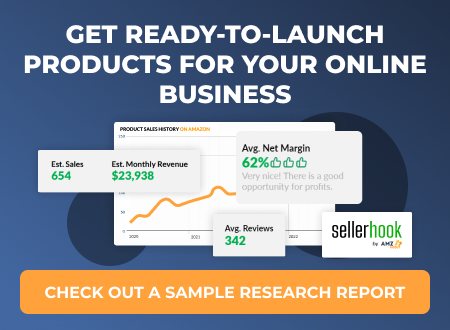
#4: Sell Wholesale Goods
Wholesale is buying a product from established brands, typically through bulk orders. Afterward, you'll resell the product individually, eventually making a profit. Sellers utilizing Amazon wholesale can potentially earn substantial profits, with some reaching six- or seven-figure earnings annually, typically ranging from $50,000 to $250,000 or more.
Because other sellers can also do the same, you might sell against tough competition. This is why it's vital to research underserved markets, which you can do using AMZScout's tools.
Unlike retail arbitrage, you don't have to look as hard for discounted products. Instead, you can call out to established vendors in the field, negotiating the best deal.
When considering sales extremes, you can focus on one of two areas:
Buy a product with less exposure, leading to less potential competition.
Choose a popular product with many sales (and more competition).
You can find a product with excellent profit potential using the same analysis process mentioned above as online arbitrage. Research can make all the difference as a successful seller.
For an easy start with wholesaling, you can check out this list of 100 wholesale items to sell from home. These products were picked by criteria of high potential profit and demand.
#5: Become a Dropshipper and Sell Someone Else's Product
Dropshipping is when you sell products managed by third-party vendors. The "true seller" handles fulfillment (storage and shipment) while you manage the product’s listing and marketing. Sellers can earn anywhere from $500 to $5,000 per month, depending on marketing skills and product selection.
Dropshipping's main weakness comes from the need to share most of your profit with these vendors. With this in mind, it will help you to research your options to find the best profit margin.
Additional research should be done on supplier quality. Because you own the listings, any sales of a low-quality product will impact you more than the supplier, so be sure to check out the supplier’s reviews.
Those with marketing talent can make a lot of money dropshipping. Still, you'll want to follow the same steps above from our online arbitrage section to ensure that you find appropriate products.
#6: Sell Handmade Products (Amazon Handmade)
Amazon Handmade is a specific category of products where every item, as the name suggests, is made by hand. Because of this, items in this category are perceived as higher quality. Sellers typically earn $200 to $3,000 per month, though exceptional makers can earn much more.
Almost 20% of customers are more likely to buy items because they represent something custom and unique. Handmade products represent exactly that, making it an excellent branding opportunity.
Keep these tips in mind if you want to join the handmade marketplace:
Focus on how much money you want to earn in relation to the amount of hours and materials you put into making the product.
Handmade items sell for more because of their perceived quality difference.
Consider offering products from Amazon on websites like Facebook Marketplace or through local vendors.
Take inspiration from social media sites like Pinterest.
Consider other crafty sites like Etsy or ArtFire to diversify your options.
#7: Create and Sell Merch with Amazon
Merch By Amazon is a print-on-demand used exclusively by those who sell on Amazon. "Merch" is a medium that displays the talents of artists or those who want to sell branded products. Sellers can make $100 to $2,000 per month, depending on how viral their designs become. So, if you want to sell designs you've made, Merch is an excellent opportunity.
Like dropshipping, Merch is an Amazon no-product platform. You don't have to touch a t-shirt or coffee mug to make sales.
Below, you'll find some extra tips you can use when getting into print-on-demand products:
Consider using alternative print-on-demand services and establish an off-site merch store.
Expand where it makes sense to display your art (e.g., coffee mugs, t-shirts, stationery, etc.).
Always ask yourself how you can make your merch products unique.
Use social media to establish your unique art style and brand to get a following.
Pay attention to potential earnings, as print-on-demand services can take a big chunk of profits.
Many print-on-demand sellers stick with t-shirts because it provides a broad canvas for displaying their talents. However, you'll want also to consider alternative mediums that make sense, like sweaters or hoodies.
Much like dropshipping, pay extra attention to Amazon's cut. As a result, those adept at marketing will find many opportunities here.
Check out our guide on getting started on Merch By Amazon for a more detailed approach to using Amazon's print-on-demand service.
#8: Sell Your Old Belongings on Amazon
Amazon has a solid market for used products. If you have many valuable items sitting around your home, Amazon provides a unique way to declutter your home. Sellers can make a few hundred dollars per month depending on the rarity and quality of their items.
Starting "used" also provides a great way to get a feel for how Amazon operates. Many sellers start in the used market because of this.
Start by looking at the product code available through your used item's packaging; if you don't have the packaging, see if the product has a serial number directly on it. This will help you see if the used product already exists on Amazon, meaning you won’t need to create an entirely new product listing.
Here are some extra tips when selling used items:
Don't sell used items that are badly damaged. Pay attention to the different levels of use and their descriptions.
Research the potential collector's value for old or unusual items.
Take some high-quality images of the product following Amazon's image requirements.
Selling unwanted stuff gives you a chance to "try out" selling. However, you shouldn't rely on this method as a primary source of income. After all, it’s only a matter of time before you run out of used stuff to sell.
When selling rare products, consider the requirements in Amazon's collectibles category. Some used products have strict requirements to become a seller.
Pro-tip for Selling Products: Apply for Amazon Launchpad
Amazon Launchpad is where new, engaging brands can gain exposure. If you want more exposure for your product, using Launchpad is a great way to get some extra sales.
Before joining Launchpad, pay attention to these requirements:
$5 million (or less) in gross sales
You need to pay for a professional account.
Your account needs to be less than four years old.
It requires a 12-month commitment.
You'll pay an extra 5% premium (added to your product automatically). After you sell more than $1 million, this premium reduces to 3%.
You must give Amazon a 30-day written notice to leave the program. However, you won't be able to leave the program early.
Some sellers report seeing mixed results with Launchpad. It is not a guarantee for more sales.
Still, the front page exposure you get from using the platform has potential. These early days of exposure can help your business grow.
#9: Use Kindle Direct Publishing to Sell Books
Kindle Direct Publishing (KDP) is a self-publishing tool that lets you sell to consumers without the need for approval from a publishing house. Amazon makes it easy to get started, letting aspiring authors get their work published without needing approval. Writers on KDP can earn anywhere from $50 to $5,000+ per month, depending on book popularity and niche.
Aspiring authors who have submitted their completed work know what it's like to receive a rejection letter. Because Amazon doesn't review the books for quality, you don't need to worry about this rejection.
Despite how easy it is, you'll still want to avoid submitting a book without going through a deep editing process. A thorough and thoughtful editing process will maintain your quality writing status even when self-publishing.
Take these tips into consideration before publishing your book:
When generating book ideas, take the time to research what people are looking for on various social media communities.
Many successful books don't exceed 100 pages, meaning you can answer short-direct questions and still provide readers with value.
Selling eBooks can help you reduce your overhead costs.
Focus on topics you have personal experience with. This lets you speak using your perspective, adding a unique nature to the book.
If you want to find out how to publish a book (or start a bookstore) on Amazon, read our guide on how to sell books on Amazon.
Making Money From Amazon (Without Selling)
If you don't want to sell products on Amazon or write a book, you've got a few other options. Below are ways you can make money from Amazon without selling eCommerce products.
#10: Become an Amazon Affiliate
Amazon affiliates provide product referrals to an audience of their followers. They can make hundreds (or thousands) of dollars on buyer's guides, how-to blogs, and general recommendations. This method is great for bloggers, YouTubers, and social media creators.
If you've ever wondered about how to earn money from Amazon links, this is your method. Custom URLs are connected to your unique affiliate ID. This lets Amazon track the number of clicks and sales you get, letting you track the amount of money you earn.
Becoming a member of the Amazon affiliate program can also help you understand how to make sales copy. Taking these lessons and using them to transition into sales is one potential avenue.
Affiliates can create a blog or start a social media page. Websites like YouTube and TikTok are great avenues for video-based product recommendations.
Before starting a website or a YouTube channel, keep these affiliate tips in mind:
Start researching various product categories, focusing on what you'll be excited about selling (and how much you can earn).
Focus on narrow product categories, so you don't confuse your audience about what you are advertising.
You can create problem-solving content (like how-to videos) focused on how products are the solution to this problem.
Use websites with robust blogging platforms (like Wix or WordPress) if blogging.
If you’re creating videos, don't be afraid to re-upload and re-use your content across multiple video-based platforms.
Above all, focus on providing value to your audience. The Helpful Content Update from Google is cracking down on websites focusing on sales over value.
#11: Become an Amazon Influencer
The next stage of affiliate marketing is becoming an influencer. Amazon influencers work directly through Amazon, marketing products on behalf of the third-party sellers who contact them. Influencers can earn $500 to $10,000 per month, depending on their following and engagement. This is one of the best ways to sell without a product.
Amazon influencers market products just like affiliates. What makes them different is that they tend to get a more significant cut. After all, influencers have larger followings, meaning they can negotiate a higher referral fee.
To register as an influencer, you need these things:
A YouTube, Instagram, or Facebook account. (Twitter was recently removed but might come back.)
At least 20 thousand followers (estimated).
You need to engage with your audience regularly.
Like an affiliate, you can add your custom URL to your blogs or YouTube videos to advertise these products. Amazon also lets you generate additional sales by creating an influencer storefront. This store enables you to start promoting products.
Like affiliate marketing, influencers should consider what products they want to list. Ideally, they have personal experience with these products that they can feature in blogs or videos.
#12: Amazon Services
Amazon Services is a way for service-based businesses to get exposure through Amazon. Plumbers, contractors, and furniture assemblers can all find a way to get their name out here. Providers typically earn $25 to $75 per hour, depending on skill, demand, and location.
Amazon takes a cut of what you earn of up to 20%. So, you might want to mark up the prices to account for the difference, or measure your profit margins before deciding to use this service. Often, advertising budgets are well below this cut.
The extra exposure can be good, but you might not find any customers. Amazon Services is not popular in some areas. Still, creating an account and listing yourself presents no risk to business owners.
Some of the services Amazon supports include contracting, plumbing, furniture assembly, outdoor equipment assembly, water heater consultations, home theater setup services, TV wall mounting services, grill assembly services, bed assembly services, and more.
#13: Become an Amazon Vine Reviewer
Amazon Vine is an invitation-only program that provides free products in exchange for reviews. Members of the program aren't paid in the traditional sense but receive products to thank them for the time they invest in leaving a review.
Because Vine reviewers receive no compensation, you can't use this job to make a primary income. However, nothing is preventing you from reselling the free things you get.
So, unfortunately, you can't get paid to write Amazon reviews. At least, you can't get paid by Amazon, as some product sellers might pay you to make reviews (which Amazon doesn't like).
To join the Amazon Vine community, start writing reviews. Amazon selects members of Vine at random, but typically chooses people based on the number of insightful, helpful reviews they leave.
Because it's completely random, you can't "apply to Vine" like other programs. With this in mind, this program is best put into the "if it happens, it happens" category.
How to Make Money While Working for Amazon
#14: Work in Amazon's Fulfillment/Distribution Centers
Amazon Fulfillment (or Distribution) Centers hire employees to assist in the warehousing and shipping of Amazon's products. FBA sellers send their products to these centers to go through the shipment or storage process. This is where your last Amazon Prime order came from.
According to Indeed, the average salary of Amazon Fulfillment Associates in the United States is $17.06 per hour. These associates make up the backbone of Amazon’s Fulfillment Center workforce.
Members of the fulfillment staff include a variety of positions. These include general laborers, floor managers, and warehouse managers. You can also find yourself in positions handling heavy equipment or tracking financial data.
To get the best pay at Amazon, apply for skilled positions.
#15: Work Remotely as an Amazon Representative
If you prefer a job directly connecting to customers, consider becoming an Amazon representative. These reps sometimes called "Amazon associates," are the backbone of Amazon's customer service force. So, if you want to work at Amazon from home, this is your job.
Associates not only handle Amazon's product lines but all issues related to third-party products. Remote customer service associates can earn up to $20 per hour, translating to around $35,000 to $45,000 per year if full-time. To be an FBA seller, becoming a representative first helps you understand the most common customer service issues.
Many of these employees also work remotely, meaning you can save money on gas and other car expenses by taking one of these jobs. Customer service jobs can pay up to $20 (especially for technical positions) and typically require the following:
A high school education
Technology experience (especially with Windows products)
Strong customer service and communications skills
A specific approach to problems (found through Amazon's work style assessments)
Working at home can help save you some money, but be sure to take care of yourself! It can become overwhelming staying inside for too long.
#16: Perform Outsourcing Tasks (Mechanical Turk)
Outsourcing tasks include anything Amazon outsources to third-party groups. You can find many jobs through Amazon Mechanical Turk (MTurk).
Amazon Mechanical Turk (or MTurk) is an outsourced group of individuals called upon for specific and (seemingly) mundane tasks. Typically, requestors of the tasks are doing so to gather information. This information helps Amazon make decisions for new designs or the best pictures.
Check out Amazon Mechanical Turk's website to sign up. Here are some common duties:
Improving categorization by tagging
Choosing the best product picture
Identifying objects in satellite imagery
Removing incomplete or duplicate content (like on Amazon reviews)
Organizing data into something understandable
Surveys
Transcribing audio and creating subtitles
Many members of Mechanical Turk typically don't make a lot of money. Minimum job payouts are one penny, which isn't enough to live on.
Is it easy to do MTurk? Short answer: yes, but that's why the task-based job market doesn't pay much. But there are some who get better pay. Mechanical Turk "Masters" are those with more experience in MTurk. These groups have more of a commitment to MTurk, meaning they make more money than average. As a result, they are trusted to take on more important tasks.
MTurk tasks are usually very short, which is how they justify low payouts. So, if you want to make money from MTurk, you’ll want to repeat many tasks in a row. With enough work at it, you can make a small amount of money but will find more lucrative opportunities elsewhere.
#17: Do Seasonal Warehousing Work
Amazon hires additional help during peak seasons (like the holidays) to address the need for more fulfillment associates. Applying to a nearby fulfillment center can give you some much-needed temporary income.
Seasonal workers can earn $17 to $20 per hour, plus some receive stipends (like $120/week for RV park space) through programs such as Amazon CamperForce.
Assignments can last from six to twelve weeks. During this period, you are required to live in an RV and stay in an RV park or campground. If you like the job (and do well enough at it), you can convert to a full-time position.
#18: Deliver Through Amazon Flex
Amazon Flex is when you operate on Amazon's behalf to make deliveries. Amazon assigns you a block based on where you live, and you are in charge of getting packages out to community members.
Drivers can earn $18 to $25 per hour, and some full-time drivers make upwards of $3,000 to $4,000 per month depending on location and schedule. This can quickly become a full-time job if Amazon is popular in your area. However, some neighborhoods order Amazon less frequently, making it more of a side hustle.
Flex is only available in 50 states within these cities. Otherwise, you might qualify to work with a third-party delivery company Amazon hires (not directly with Amazon). You can find Amazon Flex’s state list here.
Jobs consist of driving items from nearby fulfillment centers to homes. Flex is built to make deliveries fast, meaning you might expect to get things where they need to go within just a few hours. Similar side hustles you can apply for include DoorDash, Instacart, or Uber. If you've ever worked for these companies, Flex isn't too different.
Conclusion
By reviewing these 18 solutions to making money through Amazon, you can choose the best one that you enjoy most. Just because someone else has made a lot of money doing something doesn't mean you should force yourself to do it.
Regardless, the highest earnings come to those who sell on Amazon. To get started, check out our guides (from the links above) to learn more about specific selling strategies. You can also check out AMZScout's tools to expedite your research process, helping you find the best products faster.
FAQs
How can I earn money from Amazon?
You can earn on Amazon by selling products through retail, wholesale, or private-label brands, offering services, self-publishing books, dropshipping, or joining affiliate and influencer programs. Each method varies in effort, investment, and potential earnings, letting you choose a path that fits your skills and goals.
How much can a beginner make on Amazon?
Beginners can typically earn between $200 and $1,500 per month, depending on the method, niche, and effort. Side hustles like retail arbitrage, selling used items, or affiliate marketing often start smaller, while private-label brands or print-on-demand products have higher growth potential over time.
Can I really make passive income on Amazon?
Yes, methods like Kindle publishing, Merch by Amazon, affiliate marketing, or dropshipping can generate passive income. While upfront work is required, such as creating content, designs, or listings, these methods can continue earning revenue with minimal ongoing effort once established.
How much money do I need to start selling on Amazon?
Startup costs vary: retail arbitrage or selling used items can start with $50–$500, while launching a private-label brand or wholesale business might require $1,000–$5,000 or more. Expenses include inventory, shipping, Amazon fees, and marketing, so plan according to your chosen method.
